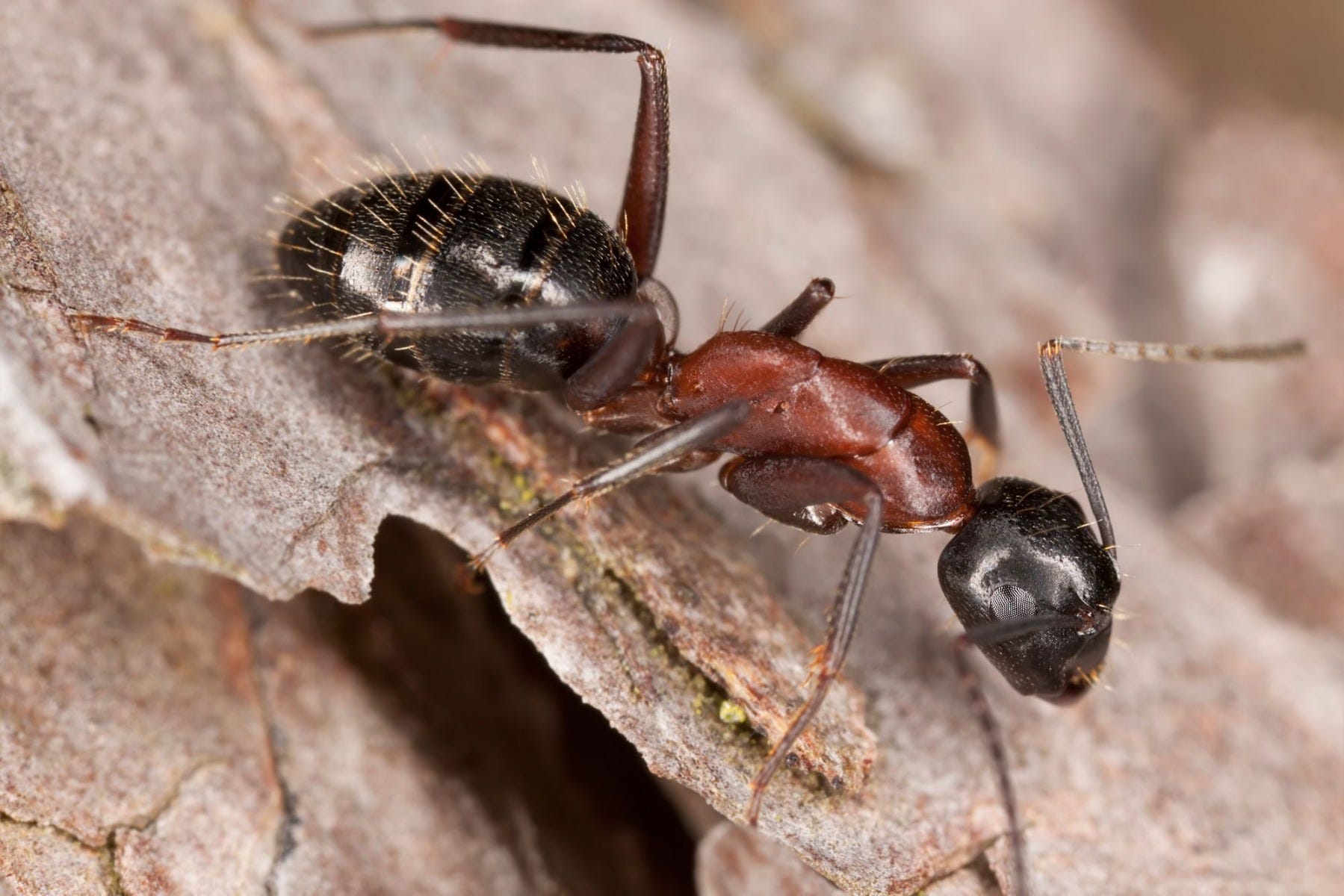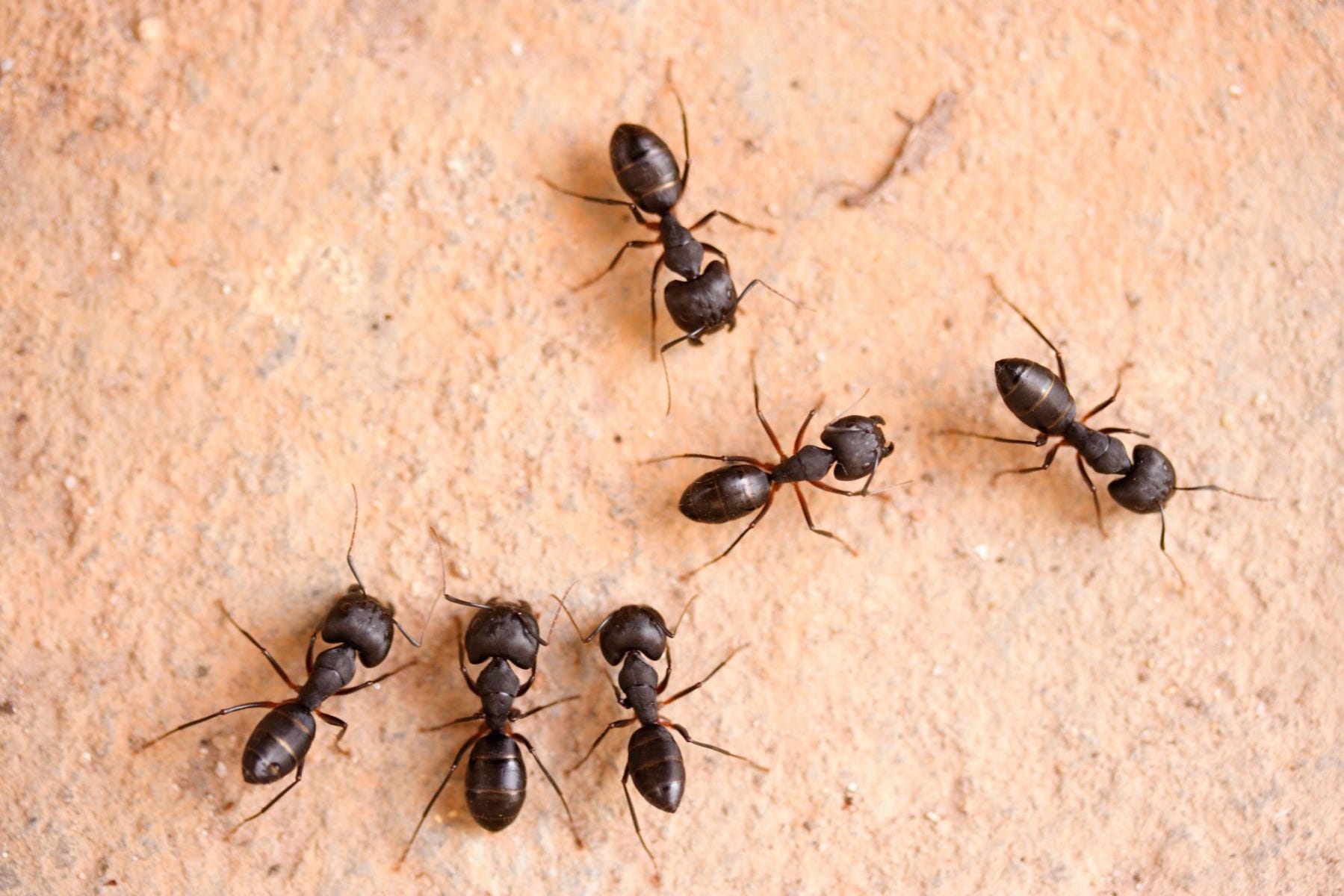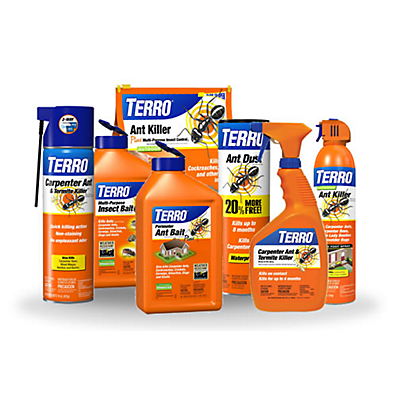Common Ant Species: Carpenter Ants

Carpenter ants have earned the right to their name. Skilled carpenters, they spend their days building sturdy, efficient homes in moist, decayed or hollowed-out wood. Thanks to their construction handiwork, they are often confused with termites. While both pests have a penchant for destroying wood, there is one big difference. Termites eat wood, while carpenter ants do not. Carpenter ants excavate the wood in order to build their homes.
Appearance
Carpenter ants can be rather ominous looking due to their size. Among the largest ants in the United States, winged queens can be a frightening one inch long. Fortunately, the black, wingless worker ants are smaller, varying in length from 3/8 to 1/2-inch. Carpenter ants also vary in color from species to species. The more common black carpenter ant is dark in color; other types of carpenter ants range from yellow to red.
Since size and color can differ, and because they are often confused with termites, the best way to identify carpenter ants is to look for these characteristics:

- Single node between thorax and abdomen
- Thorax with an evenly rounded upper surface that appears arched when viewed from the side
- A ring of hairs around the tip of the abdomen
- Workers have large mandibles
- Carpenter ants differ from termites in that they have dark-colored bodies, narrow waists and elbowed antennae. If wings are present, the hind wings are shorter than the front wings. Also, carpenter ants are more common and seen in the open.
Habitat/Diet
Widespread in the United States, carpenter ants build their homes in damp, decayed wood both inside and outside. Contrary to popular belief, they don’t feed on the wood; they merely hollow it out to build their nests. This hardworking species of ants cut destructive paths through the wood grain, removing wood shavings to outside of their nests in small piles known as frass. Spotting a pile of shaving is a clue to their presence. If treated early, carpenter ants are seldom responsible for serious structural damage to houses and buildings. However, these ants can cause extensive damage if they continue to excavate undiscovered for an extended period of time.
While many people think carpenter ants eat wood, they do not. Carpenter ants will feed on a variety of food that people eat—particularly sweets and meats. Outside, carpenter ants will forage for honeydew — the sweet, sticky excrement left behind by aphids, as well as fruits, plant juices and protein sources such as living or dead insects, and pet food.
Carpenter ants forage for food at night, starting around sunset. Workers will travel as far as 100 yards away from the nest in search of food. As they move back and forth from the nest, they leave behind pheromone (scent) trails and tactile (touch) trails. The ants use these trails to guide the way between their home and the food source.
Control Options

To effectively eliminate carpenter ants, you have to be certain that’s what you are dealing with. These are signs that you may have carpenter ants:
- Presence of ants — one or two sightings may be an ant scouting for food; several sightings means there is probably a nest nearby
- Frass — small piles of wood shavings; these can even be noticeable in spider webs
- Trails — Carpenter ants walking closely in formation along baseboards, door frames, foundations, eaves and overhangs
- Sounds — rustling or tapping noises as carpenter ants excavate wood
- Moist, decaying or hollow wood — common sights are under cabinets, around pipes, windows, doors, baseboards, etc.
Recommended Methods of Control
TERRO® liquid ant bait is made up of three main ingredients: borax, sugar and water. This combination works to attract sweet-eating ants on the hunt for a food or water source. Although it is not their primary diet, carpenter ants do occasionally feed on common sweets such as syrup, honey, jelly, sugar and fruit, so they would be attracted to the sugars in TERRO® liquid bait during these times. This means that with carpenter ants, it's a matter of catching them in the right phase of their feeding cycle, when they are actively on the lookout for sweets. Once the ants drink the bait and share it with the rest of the colony, the bait works its magic.

For successful, long-term control of carpenter ants, apply a contact killer, such as TERRO® Carpenter Ant Killer Aerosol or Carpenter Ant Killer Ready-to-Use Spray inside or around the home where activity has been seen. For strictly outdoor use, TERRO® offers its Outdoor Ant Killer Spray, which includes a precision tube that enables a stream up to 15 feet away.
When baiting outdoors, check trees, wood piles, decks, fencing, and even adjacent buildings for signs of carpenter ant activity. Treat the perimeter of your home and especially the yard, since carpenter ants can travel long distances in search of food. Be sure to treat regularly to keep foraging ants from entering your home.
Other control options include TERRO® Ant Dust, Perimeter Ant Bait Plus, Ant Killer Plus or Multi-Purpose Insect Bait.
